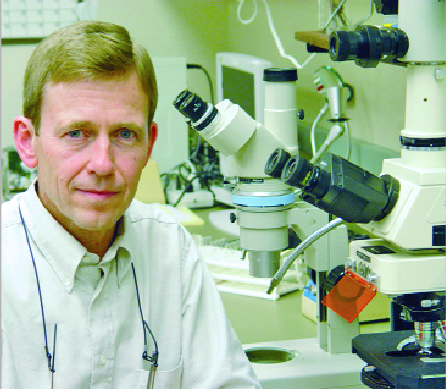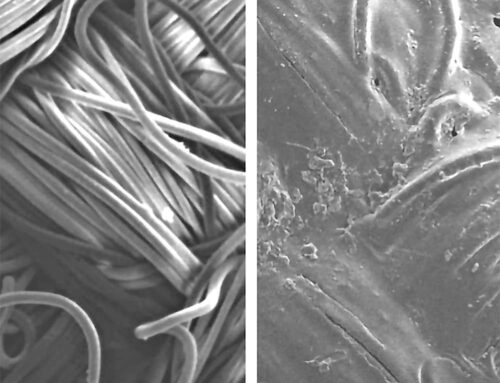
A new biocontrol, discovered by USDA plant pathologist Dr. Larry Pusey, will be marketed as Bloomtime Biological.
Dr. Larry Pusey, plant pathologist with the U.S. Department of Agriculture in Wenatchee, Washington, has discovered a new biological control for fireblight, known as Pantoea agglomerans strain E325, that he believes is more effective than other biocontrol agents. Fireblight is a sporadic, but serious disease of pears and apples. In 1998, it caused an estimated $68 million dollars of damage in Washington State and northern Oregon.
Widespread damage has also been reported this season in the Pacific Northwest. The antibiotic streptomycin has traditionally been used for fireblight control, but the fireblight organism has developed resistance, especially in Michigan and the Pacific Northwest, Pusey said. In Washington and Oregon, growers have switched to oxytetracycline (Mycoshield), which is much less effective.
Antibiotics
The biocontrol BlightBan A506 (Pseudomonas fluorescens) is available commercially, but has provided only between 0 and 40 percent control in recent field trials, Pusey said. Its efficacy, however, was improved substantially when scientists at Oregon State University applied it experimentally with iron to stimulate antibiotic production.
An effective biocontrol would eliminate or reduce the need for antibiotics and lower the risk of resistance until fireblight-resistant trees are developed as a long-term answer. The new organism, Pantoea agglomerans strain E325, is a previously unknown strain of the bacterium. Pusey discovered it about a decade ago when he collected more than 4,000 strains of bacteria and yeasts from apple flowers.
The bacteria grow naturally on the flowers in a sugary exudate produced by the flower stigma. The exudate provides the moisture and nutrients the organisms need for growth. Pusey then screened more than a thousand of the microorganisms on flowers in the laboratory for their potential to control fireblight. Strain E325 was by far the best.
“I think what we have is better than what’s currently available, and it’s better than other Pantoea strains,” Pusey said. Strain E325 provided between 40 and 70 percent disease control in field tests where the trees were inoculated with the fireblight bacterium. Pusey expects it will work better under natural conditions.
Timing
In order to control growth of the fireblight bacterium, the biocontrol would be applied before the disease organism (Erwinia amylovora) becomes established, so that it can preemptively colonize the stigma, consume available nutrients, and exclude the pathogen. Pusey said that strain E325 might have other mechanisms as well as competitive exclusion.
Many strains of the same species produce antibiotics, though the evidence of antibiotic production by E325 on flowers is not conclusive. He’s also noticed in lab tests that strain E325 reduces the pH of stigma exudates to a level that slows or stops the growth of the fireblight organism, which cannot grow at a pH below 4.5 or 4.0. Strain E325 is resistant to streptomycin, so it can be used with this antibiotic.
Once established on flowers, E325 likely will also tolerate oxytetracycline, but this must be tested. Biocontrol agents and antibiotics can complement each other. The biocontrol agents can grow and be spread by pollinating insects to other flowers, providing protection as long as flowers are open.
On contrast, antibiotics are generally more potent when applied to coincide with possible infection periods, but do not persist long on flowers. The new biocontrol was patented in 1999, and Northwest Agricultural Products, Inc., of Wasco, Washington, has an exclusive to develop the product commercially.
Pusey helped Northwest Agricultural Products to evaluate a fermentation medium for mass producing it. Registration with the U.S. Environmental Protection Agency is scheduled for approval in the summer of 2006. It will be marketed under the name Bloomtime Biological. The product will be available in a fast-dissolving soluble formulation that can be applied with standard spray equipment, Pusey said. m




Leave A Comment